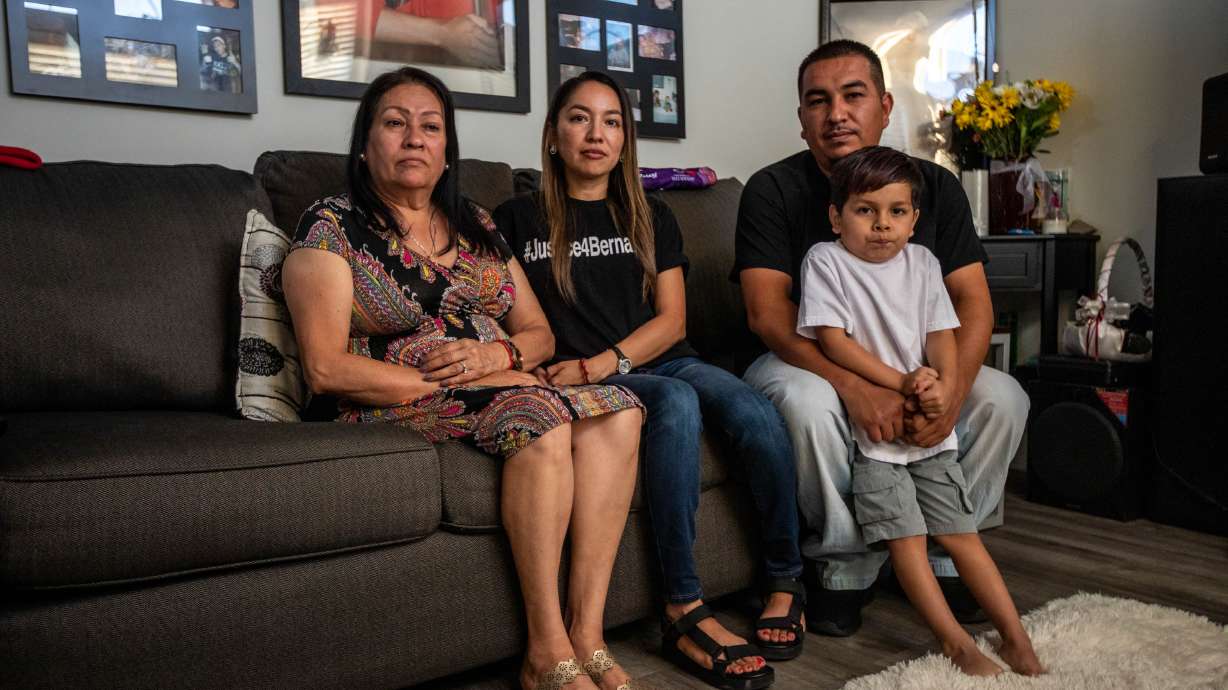Estimated read time: 4-5 minutes
This archived news story is available only for your personal, non-commercial use. Information in the story may be outdated or superseded by additional information. Reading or replaying the story in its archived form does not constitute a republication of the story.
DENVER — A federal appeals court is now considering whether officers violated Bernardo Palacios-Carbajal's constitutional rights when he was shot and killed in Salt Lake City in 2020.
U.S. District Judge David Barlow ruled on March 2, 2022, that Salt Lake police officers Neil Iversen and Kevin Fortuna, along with Chief Mike Brown, did not violate the man's civil rights in a fatal police shooting that prompted multiple protests.
The Palacios family appealed that ruling on March 31 and maintains that he was not a threat to police.
An attorney representing Palacios-Carbajal's family and an attorney representing Salt Lake police officers presented arguments to judges on the 10th Circuit Court of Appeals on Tuesday in Denver. A panel of judges with the 10th Circuit will issue a written decision determining whether the case will remain dismissed or be sent back to the District of Utah.
Background
About 2:10 a.m. on May 23, 2020, Salt Lake police officers responded to the area of 271 W. 900 South on a report of a man threatening others with a gun. The first arriving officers spotted a man in the parking lot — later determined to be Palacios — who immediately ran from them.
After a short chase where the man dropped and picked up his gun multiple times, police fired at him ultimately killing him. Iversen and Fortuna both said they saw Palacios, 22, point a gun at them while he was on the ground.
Salt Lake County District Attorney Sim Gill determined that the officers were legally justified in using deadly force and no criminal charges were filed against them. The man's family contested that decision and decided to file a civil lawsuit against the officers. The decision also led to multiple protests outside the district attorney's office.

In the 47-page decision being appealed, Barlow noted that "the loss of human life is tragic." But the questions the court had to consider were whether Palacios' constitutional rights were violated and whether the officers were entitled to qualified immunity.
"Here, police officers quickly responded to reports of two suspects — one of whom turned out to be Mr. Palacios — who had just threatened multiple people with a gun," Barlow said in a ruling. "When the officers encountered Mr. Palacios, he ignored at least 10 orders to drop his gun and show his hands, choosing to run with the gun instead. Three times Mr. Palacios fell and lost his hold on the gun; three times he picked the gun up immediately and continued to refuse the officers' commands."
Tuesday's arguments
Caroline Olsen, an attorney representing the Palacios family, argued that the question of whether the officers acted appropriately should have been given to a jury and the district court "usurped that rule" from a jury.
She did not specifically contest the first few shots made by police, but instead argued that there was a time when officers should have considered Palacios subdued and reevaluated, but instead, they continued to fire shots. She said there was no warning given at this point.
Olsen said the videos the district court relied upon in making its decision were from an officer who approached after the shooting, which doesn't show actions from officers on the scene. She said Salt Lake City and the defendants claim that Palacios lifted his right arm with a gun after he was on the ground, but the video does not show that and instead shows he landed on his right arm and would not have been able to.
"The district court only drew unreasonable inferences adverse to us," Olsen said.
She said Palacios had not demonstrated any intent to engage with the officers and instead shouted he did not want to die. Olsen argued that he was so intoxicated that he was struggling to stand and was not a threat. She said in other cases cited by the defendants, suspects are making verbal threats but Palacios was not.
"Mere possession of a gun is never sufficient, by itself ... to use authorized lethal force," Olsen said.
Samantha Slark, who represents the Salt Lake City Police Department and its officers, said what Olsen discussed about what happened that night does not show that Barlow made an error in his decision. Olsen would need to also show that the disputes would change the ruling.
Slark said law enforcement was responding to a priority one call, the highest priority. They saw Palacios still on the property and saw him draw a gun. She said he ignored 11 commands from three different officers to drop his gun and was taking steps to keep that gun in his possession. She said courts have consistently not required that officers have a gun pointed at them before responding with deadly force.
"He deliberately retrieved that gun that third time, carried on, went to the ground. And then when he was on the ground ... he wasn't immobile. Even the plaintiffs admit that he wasn't. They admit that he rolls onto his back, they admit that he's doing something with his hands," she said.
She said it was objectively reasonable in these circumstances for the officers to shoot.
"We're not required to wait to see if he was going to roll over and fire at them," Slark said.










